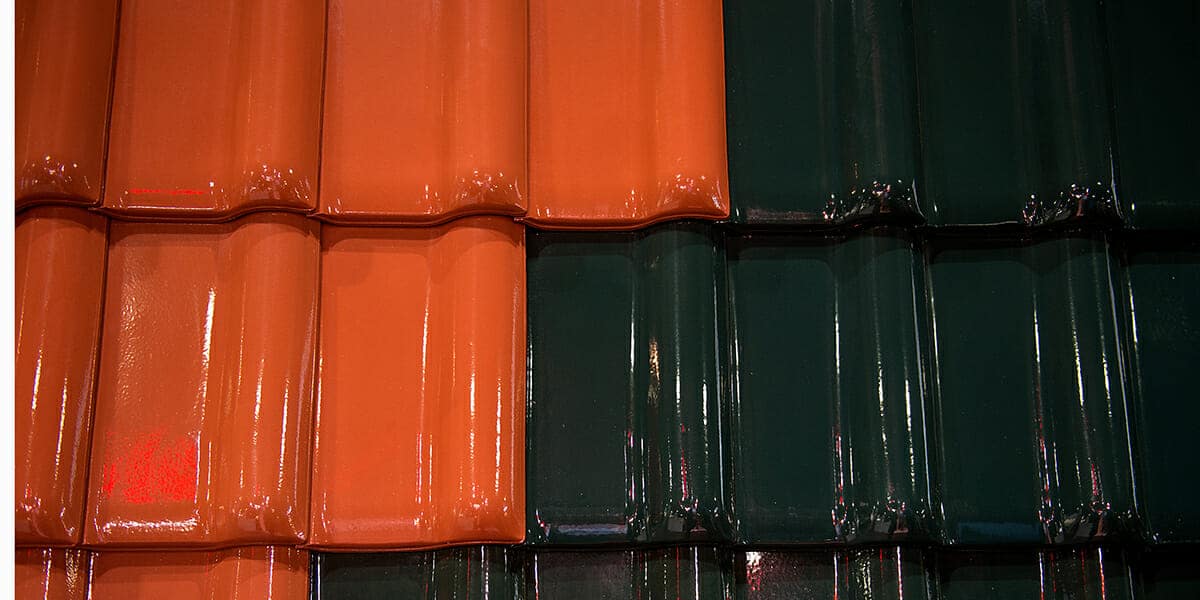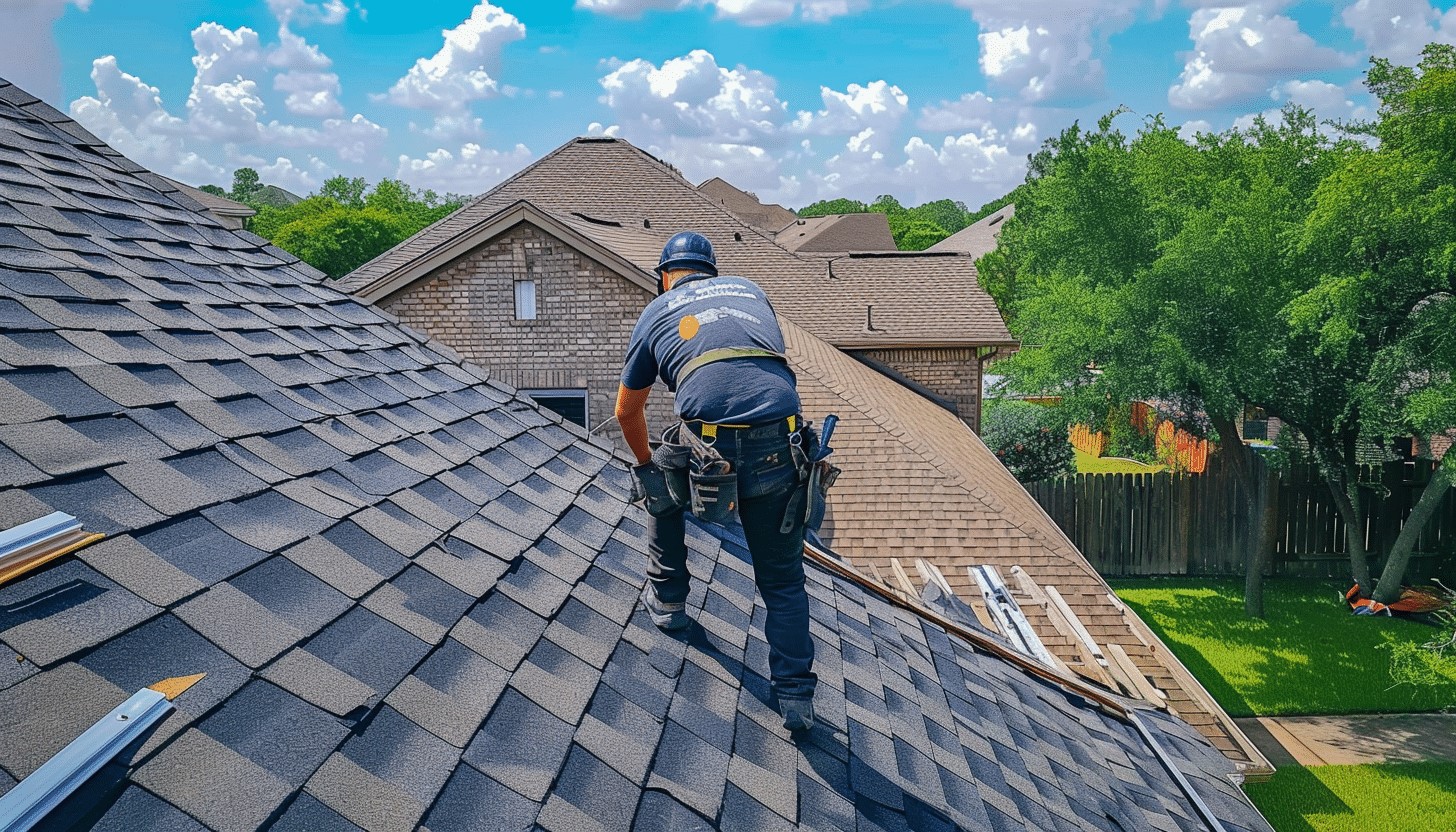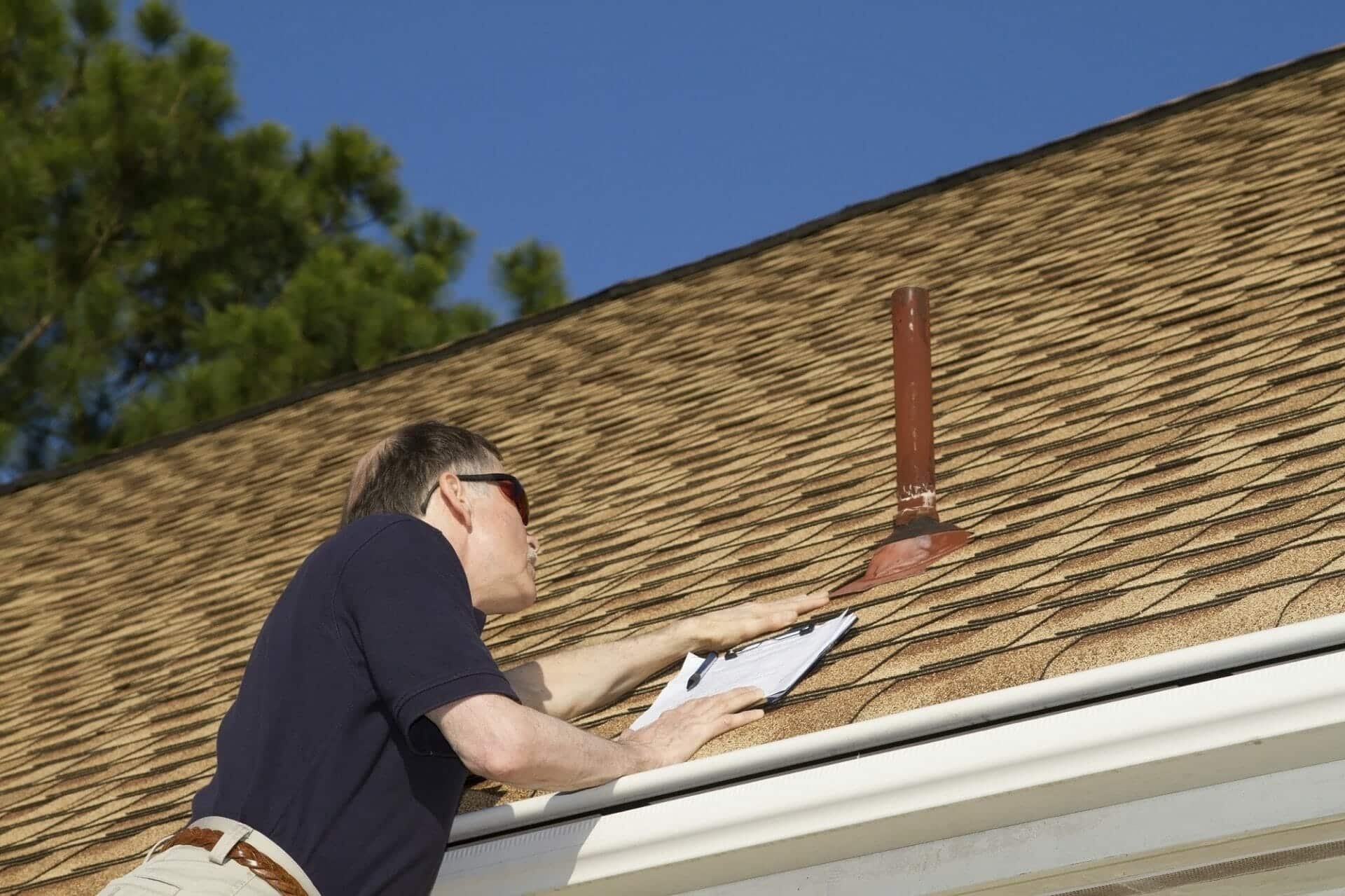Top Durable Roof Colors for Lasting Beauty and EfficiencyTop Durable Roof Colors for Lasting Beauty and Efficiency

Why Roof Color Matters: Beyond Aesthetics
Choosing the right roof color is more than a design decision. It influences your home’s energy efficiency, maintenance needs, and overall durability. Let’s explore how the best durable roof colors can make a difference. For professional maintenance tips to extend your roof’s lifespan,
.
Energy Efficiency
Light-colored roofs reflect more sunlight, keeping your home cooler and reducing energy costs. Opt for durable roof colors that maintain their reflective properties over time.
Aesthetic Appeal
Your roof color enhances your home’s curb appeal and can increase its resale value. Durable roof colors that resist fading and wear ensure your home looks beautiful for years.
Longevity
Certain colors and materials are more resistant to fading and wear, extending the lifespan of your roof. Choosing durable roof colors ensures your investment lasts.
Key Factors Affecting Roof Color Durability
Several factors play a role in how long your roof color stays vibrant and effective. To enhance your home’s energy efficiency and aesthetics,
.
Material
Different roofing materials hold color differently. Asphalt shingles, metal, and tile each have unique lifespans and resistance to fading. Durable roof colors depend on the material’s quality.
Climate
Local climate impacts roof color longevity. UV exposure, humidity, and temperature fluctuations can cause colors to fade or deteriorate. Select durable roof colors suitable for your climate.
Maintenance
Regular upkeep can extend the lifespan of your roof color. cleaning, inspections, and repairs help maintain durable roof colors and their effectiveness.
Top Durable Roof Colors for Your Home
Light and Bright: The Power of Reflectivity
Light-colored roofs, such as white and pastel shades, reflect more sunlight and absorb less heat. These durable roof colors are perfect for hot climates.
Benefits:
- High reflectivity
- Lower energy costs
- Minimal fading
Ideal for: Hot climates with intense sunlight
Sleek and Modern: Gray and Silver Shades
Gray and silver roofs offer a sleek, modern look with balanced reflectivity and dirt concealment. These durable roof colors suit various architectural styles.
Benefits:
- Moderate reflectivity
- Conceals dirt and wear
- Stylish appeal
Ideal for: Both hot and moderate climates
Natural Harmony: Earth Tones
Earth tones like beige, taupe, and light brown blend seamlessly with natural surroundings. These durable roof colors complement diverse home styles and environments.
Benefits:
- Natural aesthetic
- Resistant to fading
- Conceals dirt and wear
Ideal for: Varied climates and natural settings
Bold Statements: Dark Colors with Caution
Dark colors like black, dark brown, and deep blue can add dramatic elegance to your home. However, they absorb more heat and may fade faster in sunny climates. For expert advice on choosing durable roof colors,
.
Benefits:
- Bold, sophisticated look
- Hides stains and algae growth
Drawbacks:
- Higher heat absorption
- Faster fading in sunny climates
Ideal for: Cooler climates or homes with excellent insulation
Detailed Guide to Choosing Durable Roof Colors
Material-Specific Color Choices
Asphalt Shingles: Available in many colors, asphalt shingles are affordable and versatile. However, their color can fade quicker in intense sunlight.
Metal Roofs: Metal roofs come in various colors and finishes. They are highly durable and resistant to fading, especially with high-quality paint finishes.
Tile Roofs: Clay and concrete tiles offer natural earth tones and can be coated with pigments for additional color options. They are highly resistant to fading and weathering.
Climate Considerations
Hot Climates: Light colors like white, beige, and light gray are ideal for reflecting heat and reducing cooling costs.
Cold Climates: Darker colors can help with heat absorption, potentially reducing heating costs in colder regions.
Maintenance Tips
Regular maintenance is crucial for maintaining durable roof colors. Follow these tips:
- Regular Cleaning: Remove debris, leaves, and algae growth to prevent staining and discoloration.
- Inspect for Damage: Regularly inspect your roof for any signs of damage or wear that could affect its appearance and longevity.
- Professional Maintenance: Consider professional roof cleaning and maintenance Services to ensure your roof stays in top condition.
Frequently Asked Questions
What is the most durable roof color?
Light colors, particularly white and light gray, are often the most durable roof colors as they reflect sunlight and reduce heat absorption, leading to less thermal stress and slower color fading.
How can I prevent my roof color from fading?
Regular maintenance, including cleaning and inspections, can help prevent fading. Using high-quality materials and coatings designed for UV resistance also prolongs the life of durable roof colors.
Are dark roof colors bad for energy efficiency?
Dark colors absorb more heat, which can increase cooling costs. However, in cooler climates, dark roofs can help reduce heating costs by absorbing heat.
Can I change the color of my roof without replacing it?
Yes, some roofing materials, like metal and tile, can be painted or coated with a different color. Consult a professional to ensure proper application and durability.
What is the best roof color for resale value?
Neutral colors like gray, silver, and earth tones tend to have the broadest appeal and can enhance your home’s resale value by providing a classic and timeless look. Choose durable roof colors to maintain attractiveness and value.
Conclusion: Making the Right Choice
Selecting the right roof color involves considering factors such as material, climate, and maintenance. Light colors like white and gray offer excellent longevity and energy efficiency, making them ideal for many homes. Earth tones provide a natural look that blends well with various environments, while dark colors add a bold aesthetic but require careful consideration of climate and maintenance. Understanding these factors ensures you choose durable roof colors that enhance your home’s beauty and efficiency.
For expert roofing services, including roof color selection and maintenance, trust PRS Roofing. Contact us today for a free quote and let us help you achieve the perfect, long-lasting roof for your home. To make an informed decision about your roof color, Discover more .
Seamless Pool Integration in Luxury Hotels and ResortsSeamless Pool Integration in Luxury Hotels and Resorts

Transforming Guest Experiences with Seamless Pool Integration
Unified Access Systems for Unmatched Convenience
Seamless pool integration is revolutionizing guest experiences in the hospitality industry. By implementing unified access systems, hotels and resorts can offer guests unparalleled convenience. These systems connect pools, spas, restaurants, and other amenities, enabling guests to move effortlessly throughout the property. This level of seamless pool integration not only enhances the overall guest experience but also streamlines operations, making it a win-win for both guests and management. Discover the benefits of dcl=3074] for a truly exceptional stay.
Integrating Pool Access with Customer Loyalty Programs
Incorporating seamless pool integration with customer loyalty Programs is a game-changer. Hotels and resorts can reward frequent guests by linking pool access to their loyalty status. This Personalized approach fosters a deeper connection with guests and encourages repeat visits. Imagine guests enjoying exclusive poolside perks, such as priority seating or special services, all thanks to seamless pool integration.
Tailoring Guest Journeys with Advanced Pool Integration Technologies
Seamless pool integration allows for highly personalized guest experiences. Advanced technologies automatically adjust pool settings based on individual preferences, creating a unique and luxurious stay. From poolside service to room temperature control, seamless pool integration ensures that every aspect of the guest’s journey is tailored to their needs. This high level of customization sets properties apart from competitors and delights guests at every turn.
Operational Excellence Through Seamless Pool Integration
Efficient Facility Management with Data Analytics
Seamless pool integration is not just about enhancing guest experiences; it also brings significant operational benefits. Data analytics play a crucial role in facility management, allowing hotels and resorts to monitor usage patterns and optimize staffing and maintenance schedules. This intelligent approach, powered by seamless pool integration, leads to improved service and cost savings, making operations more efficient and effective. Implementing
can significantly improve guest satisfaction.
Achieving Energy Efficiency with Smart Pool Systems
Smart pool systems are a cornerstone of seamless pool integration. These systems help hotels and resorts achieve remarkable energy efficiency by putting facilities into energy-saving modes when not in use. Upon guest arrival, the systems revert to their preferred settings, ensuring maximum comfort. This seamless pool integration not only reduces operational costs but also aligns with sustainability goals, making it an essential feature for modern hospitality.
Enhancing Security with Advanced Access Controls
Security is a top priority in the hospitality industry, and seamless pool integration significantly enhances it. Advanced access controls monitor and respond to unusual activity, ensuring guest safety. This seamless pool integration feature provides peace of mind for both guests and management, making security a seamless part of the guest experience. Our approach to
sets us apart in the industry.
Elevating the Hospitality Industry with Seamless Pool Integration
Competitive Edge Through Seamless Pool Integration
In the competitive world of hospitality, seamless pool integration offers a distinct advantage. Hotels and resorts that invest in cutting-edge pool technology and personalized guest experiences stand out from the crowd. Seamless pool integration creates a modern, luxurious atmosphere that attracts repeat guests and builds long-term loyalty. By focusing on guest-centric amenities, properties can leverage seamless pool integration to achieve sustained success.
Strategic Planning for Seamless Pool Integration
Effective seamless pool integration requires strategic planning. Hotels and resorts must analyze competitor offerings and continuously innovate to stay ahead. Seamless pool integration should be part of a broader strategy that includes unique local experiences and high-quality customer service. By making seamless pool integration a signature feature, properties can showcase their commitment to innovation and guest satisfaction.
The Future of Hospitality: Embracing Seamless Pool Integration
As the hospitality industry evolves, seamless pool integration will become increasingly important. Properties that embrace this trend will lead the way in delivering exceptional guest experiences. Seamless pool integration is not just a trend; it’s a fundamental shift in how hotels and resorts operate, offering endless possibilities for enhancing guest satisfaction and operational efficiency. Learn more about how
can enhance your property.
Frequently Asked Questions About Seamless Pool Integration
How does seamless pool integration enhance the guest experience?
Seamless pool integration enhances the guest experience by providing a unified access system that allows for effortless movement between various amenities like pools, spas, and restaurants. It also links to customer loyalty programs, offering personalized rewards and privileges based on guest usage patterns. This tailored approach makes each stay unique and luxurious.
What operational benefits does seamless pool integration offer?
Seamless pool integration offers numerous operational benefits, including efficient facility management through data analytics. These systems help monitor usage patterns, optimize staffing, and schedule maintenance strategically. Smart pool systems also achieve energy efficiency by adjusting settings based on occupancy, leading to significant cost savings.
How does seamless pool integration provide a competitive edge in the hospitality industry?
Seamless pool integration provides a competitive edge by creating a modern and luxurious guest experience. Hotels and resorts that offer innovative pool technology and personalized services attract repeat guests and build loyalty. This differentiation, combined with high-quality customer service, sets properties apart in the competitive hospitality market.
What role do advanced pool integration technologies play in guest customization?
Advanced pool integration technologies are crucial for personalizing guest experiences. They automatically adjust pool settings to match individual preferences, providing immediate comfort and luxury. These technologies can also be linked with loyalty programs, offering rewards based on frequent pool usage, further enhancing guest satisfaction.
How do smart pool systems contribute to energy efficiency?
Smart pool systems are designed to conserve energy by putting facilities into energy-saving modes when not in use. They quickly return to guest-preferred settings upon arrival, ensuring optimal resource utilization. This seamless integration of smart technology reduces operational costs while maintaining high levels of guest comfort and convenience.
By following these guidelines and integrating seamless pool integration into their operations, hotels and resorts can significantly enhance guest experiences, achieve operational excellence, and gain a competitive edge in the hospitality industry.
The Ultimate Guide to Storm Damage Roof InspectionThe Ultimate Guide to Storm Damage Roof Inspection

Storms are formidable forces of nature that can wreak havoc on your roof. Detecting storm damage early is critical to prevent costly repairs and maintain your home’s safety. This ultimate guide will walk you through the process of a comprehensive storm damage roof inspection, revealing key signs to watch for and preventative measures to implement. Discover the benefits of regular
- today.
Why Every Home Needs a Storm Damage Roof Inspection
Roofs are your home’s first defense against harsh weather. A storm damage roof inspection is essential to identify and repair any damage promptly. By understanding the impact of storms on your roof, you can take proactive steps to protect your investment.
Key Indicators of Storm Damage
Spotting Missing or Damaged Shingles
Missing or damaged shingles are often the most visible signs of storm damage. High winds can easily lift or tear shingles, leaving your roof vulnerable. Ensure your roof’s longevity with our
- tips.
- Look for shingles scattered around your yard.
- Check for visible gaps on your roof.
- Inspect shingles for cracks, curls, or tears.
A thorough storm damage roof inspection can help you identify these issues early.
Detecting Dents and Punctures
Hailstorms can leave behind dents and punctures, especially on metal roofs or asphalt shingles.
- Check metal flashings or vents for dents.
- Look for punctures in shingles or other roofing materials.
Incorporating a storm damage roof inspection into your routine ensures you catch these problems before they escalate.
Identifying Granule Loss
Granules on asphalt shingles protect them from UV rays. Storms can dislodge these granules, reducing the lifespan of your roof.
- Look for granules in gutters or downspouts.
- Inspect shingles for bald spots.
A detailed storm damage roof inspection will highlight these subtle yet significant signs of wear.
Additional Signs to Watch For
Leaks and Water Damage
Water infiltration through damaged roofs can cause extensive interior damage.
- Notice water stains on ceilings or walls.
- Detect damp or musty odors in the attic.
- Look for visible mold growth.
Regular storm damage roof inspections can help you spot leaks early, preventing further damage. Learn more about the importance of
- for your home.
Sagging Roof Deck
A sagging roof deck indicates severe structural issues that need immediate attention.
- Observe uneven roof lines.
- Identify areas of the roof that appear to be sinking.
Prompt storm damage roof inspection can avert potential disasters from structural damage.
Steps to Take After Identifying Storm Damage
Conducting a Safe Preliminary Inspection
- Use binoculars or a zoom camera to inspect your roof from the ground safely.
- Look for all the signs mentioned above during your storm damage roof inspection.
Documenting the Damage
- Take clear photos and detailed notes of all visible damage.
- This documentation is crucial for insurance claims.
Engaging a Professional Roofing Contractor
- Hire a professional to perform a thorough storm damage roof inspection.
- Professionals can spot hidden issues that might not be visible to the untrained eye.
Filing an Insurance Claim
- Submit your documentation and repair estimates to your insurance company.
- Start the claim process for storm damage repairs promptly.
Preventative Measures for Future Storms
Regular Roof Maintenance
Routine maintenance can help you catch potential problems before they worsen.
- Clean gutters and downspouts regularly.
- Trim overhanging branches.
- Inspect and repair loose or damaged shingles.
Incorporating storm damage roof inspection into your regular maintenance schedule is key.
Upgrading to Storm-Resistant Materials
Consider installing more durable materials designed to withstand severe weather.
- Choose impact-resistant shingles.
- Opt for metal roofing.
- Consider rubber roofing systems.
Frequently Asked Questions
How Often Should I Conduct a Storm Damage Roof Inspection?
It’s recommended to inspect your roof at least twice a year, preferably in spring and fall, and after any significant storm.
Can I Perform Roof Repairs Myself?
While minor repairs might seem manageable, it’s best to hire a professional to ensure the work is done safely and correctly.
How Long Do I Have to File an Insurance Claim for Storm Damage?
This varies by insurance policy. Check with your insurance provider for specific timelines and requirements.
What Should I Do If I Can’t See the Damage from the Ground?
If you’re unable to assess the damage yourself, contact a professional roofing contractor for a detailed storm damage roof inspection.
Are There Specific Signs of Storm Damage on Flat Roofs?
Yes, look for pooling water, bubbles in the roofing material, and damage to the roof membrane or flashing.
How Can I Prevent Future Storm Damage to My Roof?
Regular maintenance, timely repairs, and using storm-resistant materials can significantly reduce the risk of storm damage.
Conclusion
A comprehensive storm damage roof inspection is crucial for maintaining your roof’s integrity and protecting your home. By recognizing key signs of damage and taking preventative measures, you can ensure your roof remains robust against future storms. Don’t hesitate to contact a professional roofing contractor for expert advice and repair services.
For professional roof inspection and repair services, contact Sugar Land Roofing at (832) 536-8856. Our experienced team is ready to help you maintain the integrity and safety of your home.
Ultimate Guide to Florida Roofing Contractor LicenseUltimate Guide to Florida Roofing Contractor License

Why Obtaining a Florida Roofing Contractor License is Essential
Understanding the significance of a Florida roofing contractor license is crucial for anyone entering the industry. Licensing ensures:
- Quality Work: Licensed contractors demonstrate expertise and adherence to safety standards.
- Consumer Protection: Licensing provides a safeguard for consumers, ensuring they receive professional Services.
- Industry Regulation: Licensing helps maintain high standards and keeps unqualified individuals out of the market.
Types of Florida Roofing Contractor Licenses Explained
Certified Roofing Contractor License: The Gold Standard
A certified roofing contractor license allows you to work anywhere in Florida. The requirements include:
- Experience: Minimum of four years of roofing experience or an equivalent combination of education and experience.
- Examination: Passing the rigorous state certification exam covering roofing practices and Florida laws.
- Financial Stability: Proof of financial stability and responsibility.
- Insurance: General liability and workers’ compensation insurance.
Understanding
- is crucial for any roofing professional.
Registered Roofing Contractor License: Local Expertise
A registered roofing contractor license restricts work to specific local jurisdictions. Requirements vary by locality but generally include:
- Local Licensing: Obtaining a local license from the county or municipality.
- Compliance: Adhering to local codes and regulations.
Specialty Roofing Contractor License: Niche Mastery
This license caters to contractors specializing in specific types of roofing work, such as:
- Metal Roofing
- Tile Roofing
- Flat Roofs
Each specialty requires additional training or certifications. To learn about the benefits of
- , visit our guide.
Steps to Secure Your Florida Roofing Contractor License
1. Meet Basic Qualifications
- Age: Must be at least 18 years old.
- Education: High school diploma or equivalent.
- Experience: Relevant work experience in the roofing industry.
2. Complete the Application Process
- Application Form: Submit a completed application form to the Florida Department of Business and Professional Regulation (DBPR).
- Fee Payment: Pay the necessary application and licensing fees.
3. Pass the Licensing Examination
- Study Materials: Review the study materials provided and prepare for the exam, covering technical, business, and safety aspects of roofing.
- Schedule and Pass: Schedule the exam through a DBPR-approved testing center and pass both parts of the examination.
4. Demonstrate Financial Stability
- Credit Report: Provide a credit report to prove financial responsibility.
- Financial Statement: Submit a financial statement showing your business’s financial health.
5. Obtain Necessary Insurance
- General Liability Insurance: Protects against claims of property damage or bodily injury.
- Workers’ Compensation Insurance: Required if you have employees, covering work-related injuries.
Key Regulations and Compliance for a Florida Roofing Contractor License
Building Codes and Standards
Florida roofing contractors must comply with state and local Building codes, which include:
- Florida Building Code: Outlines construction standards, including roofing materials and installation methods.
- Local Codes: Additional regulations imposed by local governments.
Continuing Education: Stay Updated
Licensed contractors must complete continuing education courses to keep their knowledge current and maintain their license. These courses cover:
- Safety Practices
- Building Codes Updates
- Advanced Roofing Techniques
License Renewal: Stay Compliant
Licenses must be renewed every two years. Renewal requirements include:
- Continuing Education Credits: Proof of completed continuing education.
- Fee Payment: Payment of renewal fees.
- Updated Financial Information: Submission of updated financial statements if required.
Benefits of Hiring a Licensed Florida Roofing Contractor
Ensuring Quality and Reliability
Licensed contractors are more likely to deliver high-quality work because they adhere to industry standards and regulations.
Legal Protection and Peace of Mind
Hiring a licensed contractor provides legal protection in case of disputes or issues with the roofing work.
Comprehensive Insurance Coverage
Licensed contractors carry insurance, protecting homeowners from liability in case of accidents or damages during the roofing project. Ensuring compliance with
- helps maintain industry standards.
Frequently Asked Questions About the Florida Roofing Contractor License
What is the difference between a certified and registered roofing contractor license?
- Certified Contractors: Can work anywhere in Florida and must pass the state certification exam.
- Registered Contractors: Limited to specific local jurisdictions and must comply with local licensing requirements.
How often do I need to renew my Florida roofing contractor license?
Licenses must be renewed every two years, requiring proof of continuing education and payment of renewal fees.
What types of insurance are required for Florida roofing contractors?
- General Liability Insurance: Protects against property damage and bodily injury claims.
- Workers’ Compensation Insurance: Covers employees’ work-related injuries.
What happens if I hire an unlicensed contractor?
Hiring an unlicensed contractor can lead to poor workmanship, legal issues, and lack of insurance coverage, putting you at significant risk.
How can I verify a roofing contractor’s license in Florida?
You can verify a roofing contractor’s license through the Florida Department of Business and Professional Regulation’s website by entering the contractor’s license number or name.
Do specialty roofing contractors need additional licenses?
Yes, specialty roofing contractors may need additional certifications or licenses for specific types of roofing work, such as metal or tile roofing.
Conclusion: The Value of a Florida Roofing Contractor License
Navigating the licensing requirements for Florida roofing contractors ensures that only qualified professionals provide roofing services. Understanding these requirements helps aspiring contractors prepare for a successful career and allows consumers to make informed decisions when hiring a roofing contractor. Prioritizing the Florida roofing contractor license ensures quality, safety, and reliability in the roofing industry. Explore the requirements and process for - on our website.


